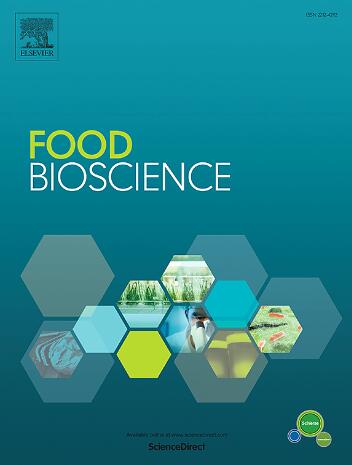A user-friendly sugar stevia: Role in diabetes-associated health adversities
IF 4.8
1区 农林科学
Q1 FOOD SCIENCE & TECHNOLOGY
引用次数: 0
Abstract
Diabetes mellitus, “the actual sugar rollercoaster”, is emerging as a global threat affecting over half a billion individuals globally. Living with diabetes is like walking the sugar tightrope, with one misstep in medication or diet, resulting in blood sugar levels swinging dangerously out of control. It is a primary health challenge acting as a catalyst for several fatal secondary complications such as neurodegeneration, obesity, liver, cardiac, and renal injury, along with sexual dysfunction and metabolic syndrome, thus making its management crucial for overall well-being. Stevia, present in the perennial shrub Stevia rebaudiana, is a potentially bioactive “not too sweet, bio-sweetener”, actively being utilized and researched owing to its ability to sweeten beverages and food products without elevating blood glucose levels, instead, reducing the blood glucose and cholesterol levels, and managing blood pressure. In addition, it has also been reported to possess anticarcinogenic, antioxidant, antihypertensive, anti-inflammatory, antimicrobial, and antitumor activities, thus justifying the title “user-friendly sugar”. However, a comprehensive review of the potential bioactivities of stevia against diabetes-associated fatal health adversities is yet to be reported. The recent collective efforts to explore the true potential of stevia have been successful enough to report its ability to modulate oxidative stress, inflammation, apoptosis, autophagy, adipogenesis, glucose uptake, and insulin resistance using various in vitro and in vivo models. This review provides an in-depth journey of the “unhidden, yet unreviewed” magic of stevia against the prominently increasing diabetes-associated risks.

甜菊糖:在糖尿病相关健康逆境中的作用
糖尿病,“真正的糖过山车”,正在成为影响全球超过5亿人的全球性威胁。糖尿病患者就像走糖绳索,在药物或饮食上的一个失误,就会导致血糖水平危险地失去控制。它是一种主要的健康挑战,是一些致命的继发性并发症的催化剂,如神经变性、肥胖、肝脏、心脏和肾脏损伤,以及性功能障碍和代谢综合征,因此使其管理对整体健康至关重要。甜菊糖存在于多年生灌木甜菊糖中,是一种潜在的生物活性“不太甜的生物甜味剂”,由于它能够在不升高血糖水平的情况下使饮料和食品变甜,而是降低血糖和胆固醇水平,并控制血压,因此被积极利用和研究。此外,据报道,它还具有抗癌、抗氧化、降压、抗炎、抗菌和抗肿瘤的活性,因此被称为“用户友好的糖”。然而,甜菊糖对糖尿病相关的致命健康逆境的潜在生物活性的全面审查尚未报道。最近的集体努力探索甜叶菊的真正潜力已经足够成功地报道其调节氧化应激,炎症,细胞凋亡,自噬,脂肪生成,葡萄糖摄取和胰岛素抵抗的能力,使用各种体外和体内模型。这篇综述为甜菊糖对抗显著增加的糖尿病相关风险提供了一段“未被隐藏但未被评论的”魔力的深入之旅。
本文章由计算机程序翻译,如有差异,请以英文原文为准。
求助全文
约1分钟内获得全文
求助全文
来源期刊

Food Bioscience
Biochemistry, Genetics and Molecular Biology-Biochemistry
CiteScore
6.40
自引率
5.80%
发文量
671
审稿时长
27 days
期刊介绍:
Food Bioscience is a peer-reviewed journal that aims to provide a forum for recent developments in the field of bio-related food research. The journal focuses on both fundamental and applied research worldwide, with special attention to ethnic and cultural aspects of food bioresearch.
 求助内容:
求助内容: 应助结果提醒方式:
应助结果提醒方式:


